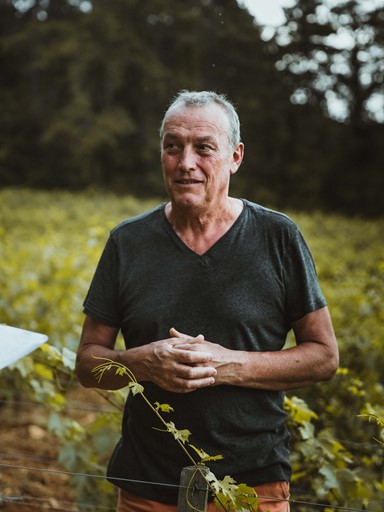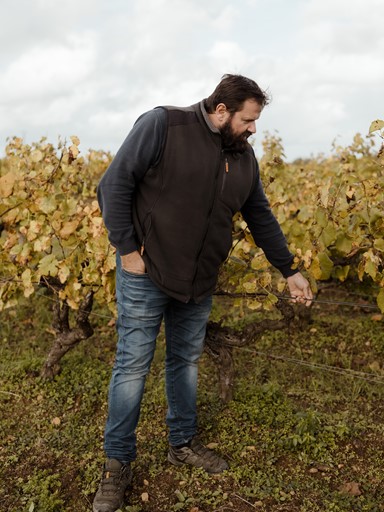
Winemaking in 2024
Navigating Climate Extremes
How our producers are navigating climate extremes...
Grape vines have been cultivated for thousands of years, and throughout this time they have continually adapted to changes in weather and climate. Winemakers have always found new ways to manage and work with these uncontrollable elements, both in the vineyard and in the cellar. Some of these methods, like longer ageing, different ageing vessels or chapitalisation have altered wine styles in positive ways, ultimately increasing the accessibility and popularity of wine the last few centuries.
But the last decade has brought dramatic, lasting changes in weather patterns and the climate they create. Virtually all of our producers suffered from tricky conditions in 2023. And many also in 2022, and 2021 and let’s not even talk about 2020. Most say the extremity of weather events is the biggest challenge, and that they can no longer shrug off losses as bad luck and now expect problems each year.
It seems every few months our feeds are dominated by dramatic images of vineyards lit by thousands of candles to fend off frost or Hollywood-style footage of wildfires being doused with water. Contrasting tales of too much rain or too little rain, and freezing temperatures or heat-scorched grapes are now a familiar refrain. Our collective hearts break for these hard-working producers, yet we wonder if even the most devoted wine lovers are becoming a bit tone-deaf to the constant din of climate impact stories.
So let’s focus for a bit instead on what is being done, with an emphasis on our producers. There are countless other factors to address, but we want to concentrate on the elements with direct impact on people, our people, our family of winemakers.
Proof In Every Glass
In Burgundy, Emmanuel Giboulot is working with teams of scientists, academics and farmers to evaluate the changes in the local terroir and search for ways to preserve it. “There have big changes in last 10 years, we all know this,” he says. “What I see is more extremes… extreme cold or rain or heat. Nothing is settled. It’s very worrying. We have tried to adapt to the climate, but it is an evolution. One that has become very accelerated.”
The negative effects of these climate extremes are on more than just yields and hours of a winemaker’s sleep, they are in every glass. Vines that suffer extreme heat or drought-stress yield grapes with less acid and more sugar, which results in different flavours and aromas and higher alcohol. If you’re lucky enough to be served a nice red Burgundy from the 1980’s, it will likely boast an alcohol around 11%, whereas the average alcohol for French red wines today is well over 14%. Frost-damaged vines produce less grapes and yield more concentrated fruit, resulting in smaller amounts of more intense wine. Rain-soaked, bloated grapes result in the inverse – diluted flavours and wines lacking in dimension.
The nature of terroir means it is fundamentally dynamic, and the flavours and profiles of wine have always changed with the passage time...and usually consumers adapt to these new styles. Will that still be true if what remains is only wines with bold flavours and the burn of 16% alcohol? And how can winemakers evolve faster than nature, in the face of such extremities?

Strategies New & Old
The most proactive winemakers are actively embracing climate mitigation tactics both new and old.
Technology has brought new ways to capture carbon in soils, seed clouds against hail, even AI-controlled irrigation. Simpler, no-tech methods like altered canopy management, better clone selection and colder ferments are becoming commonplace among our producers.
Several French appellations have relaxed some of their typically strict rules in order to address climate issues – and forward thinking producers are taking advantage of this flexibility...
Frost
Frost incidents are increasingly common, and often occur later in the season, threatening fragile buds. In the Loire, where early frosts are a now persistent issue, Damien and Coralie Delecheneau of La Grange Tiphaine use two stage pruning - where vines are lightly pruned in winter and again in spring – to delay budding as long as possible in case of late frost.
This method has become popular in many regions, but Coralie says it also has downsides, “We are still experimenting with this, as we think it may increase yields. We leave a few buds at first, and then when frost risk is over we go back and cut again, but we may be are not pruning enough, we saw more grapes and our yields increased too much.” Damien and Coralie have also invested in five gigantic anti-frost wind towers, which they admit were expensive, but the only viable long-term solution to keep frost at bay.
Dedicated followers of our communications might recall Jérôme Bretaudeau of Domaine de Bellevue in Muscadet, who battles deadly frosts with an innovative fil chauffant system that allows heat to be sent along the vine trellis wires. This is another more efficient and forward-thinking (but expensive) alternative to lighting hundreds of candles or burning fires to heat rows.

Heat - Pruning & Varietals
Gobelet style pruning (bush vines) has returned to favour in heat-affected areas, as it offers grapes shelter from the blistering sun. Use of this method had declined in lieu of training that permits mechanical pruning and harvesting, which is less labour-intensive and less expensive.
Didier Barral of Domaine Leon Barral explains, “Thirty years ago, all the vineyards, from Languedoc to Perpignan were only gobelet. No wires! Grapes were grown this way here for over 2000 years, why would we change that?” Didier says bush vines also improve resistance to wind and drought and yield better quality grapes.
Another of our Languedoc producers, Ludovic Engelvin, has had devastating losses for several years running and is now trialing another strategy – starting over with different (hopefully more-resistant) grapes. He’s among increasing numbers of growers who are returning to once-forgotten native varieties that are considered inherently better-suited to the local conditions. He has replaced several vineyards with the ancient cépage Oeillade, which he believes is better suited to the his terroir now. He sourced massale cuttings from old vines and is now growing 1.5 hectares of Oeillade.

Heat - Altitude & Diversity
Another strategy is to progressively move vines up higher up the mountains, which can decrease the average temperate of the vineyards by one or two degrees. At Sicus in Tarragona, Spain, Eduard Pie Palomar is considering this approach, hoping to also reduce direct sun exposure on his grapes.
A more extreme version of this is to change regions entirely. Jordi Perez of Le Casot des Mailloles in Banyuls now spends half his time producing wine under Domaine du Peyrou, in the slightly cooler climes of Gers, France. The area is nestled inland, and thus more protected from high coastal winds and arid temperatures.
Grape growers are exploring solutions that involve growing other things. Many now encourage grass to grow between vines to keep moisture and foster more biodiversity in the soil. Integrating trees and shrubs into vineyards can lower temperatures 2–4 °C. The tree’s root go deeper than the vines to access their own water source, and eventually the trees help manage the local climate as they mitigate carbon dioxide, cut off winds and frost, and offer shade – providing a literal little breath of fresh air during extreme heat. In the Loire Valley at Terre De L’Elu, Thomas and Charlotte Carsin have planted fruit trees all around key parcels, hoping to create microclimates and expand the range of animal and insect life in their vineyards.

What’s Next?
Wider acceptance of organic and regenerative farming and the progressive spread of biodynamics is hopefully creating traction, and more winemakers are embracing long-term thinking towards managing climate issues. But if there’s a common thread amongst these tactics…it’s price. Most of these methods are costly – whether for installation, operation or labour. This simply must be passed on in the price of the finished wine, (and not solely be a burden for the producers to bear), which is a tricky reality in the current price-sensitive market.
Even if growers are able to implement the best of the options available, the crucial requirement for improving long-term viability of vineyards is time. A new canopy management program could yield improvements in one growing season, but most changes require a much longer view. Some tactics, like replanting entire vineyards, will take years to yield results. Years spent with crossed-fingers and sparse income.
Our clients know that making wine in a thoughtful, planet-friendly way is hard work, but we have to accept that changing the way grapes are farmed, adapting to the extreme conditions and embracing lasting strategies is an additional, and essential, expense. We all must adjust our price expectations, and understand that careful, considerate winemaking with a long-term view is just more costly.
We seek out winemakers who care about every step of the journey - to turn soil and plants into the delightful bottles we know and love. We hope both consumers and members of the trade are motivated to learn the true story behind the wines they buy – to dig deep, ask questions and make thoughtful choices. Let’s make sure we all have another few thousand years to enjoy the fruit of the vine.
Words by Allison Burton-Parker
Photography by Matt Hickman & Audrey Dubessay








